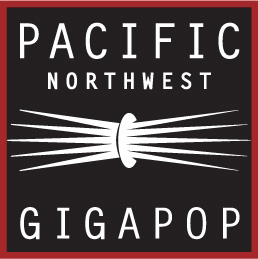RouteViews on Pacific Wave Improves Network Operations for International Research and Education
The resolution of routing-related issues in international research and education networks (RENs) has been augmented with the availability of a RouteViews instance on the Los Angeles node of the Pacific Wave international distributed peering exchange for research and education networks in the Pacific Rim. Pacific Wave’s RouteViews collector is an addition to the set of global RouteViews collectors already publicly available to network operators.
Pacific Wave is a joint project of the Corporation for Education Network Initiatives in California (CENIC) and the Pacific Northwest Gigapop (PNWGP). CENIC and the PNWGP are the initial peers with Pacific Wave’s RouteViews collector. The activation of additional peering sessions with additional Pacific Wave participants is targeted for the next few weeks.
Pacific Wave’s RouteViews collector is physically deployed in Los Angeles and is designed so that any of Pacific Wave’s participants connected at Los Angeles, Sunnyvale, or Seattle can choose to peer with it. Network operators anywhere in the world can then login to the Pacific Wave RouteViews collector to view routing information specific to these RENs.
With this access, network operations engineers worldwide can diagnose routing and domain reachability issues related to Pacific Wave’s REN participants without having to coordinate with multiple Network Operations Centers (NOCs).
The global RouteViews Collector Map
According to Hans Kuhn, Assistant Director for Research Infrastructure at the Network Startup Resource Center (NSRC), “CENIC's partnership with RouteViews strengthens the collaborative
infrastructure that network operators and researchers rely on for Internet routing data. We also appreciate the support of the National Science Foundation (NSF) and the research and education community which enables us to continue our work.”
Kevin Thompson, a Program Director at the NSF in the Office of Advanced Cyberinfrastructure, states, “Hosting a RouteViews collector is another excellent example of CENIC leadership in the research and education community.”
The RouteViews project, originally developed by the University of Oregon, is a tool for Internet operators to obtain real-time BGP information about the global routing system from the perspective of different locations around the Internet. The 26-year data set of BGP information, which has been archived by RouteViews since 1997, is available on its website at www.routeviews.org and helps network operators and researchers identify and address issues related to routing stability, security, and performance of the global Internet. Network operators, in particular, use RouteViews data to understand reachability, hijacks, peer visibility, mass withdrawals, and RPKI status by utilizing the dozens of collectors deployed around the world. More than 1000+ peer-reviewed papers, also available on the website, cite RouteViews as an important source of BGP data.
Thompson further added, “The University of Oregon’s RouteViews platform provides detailed public views of Internet routing data, and has persistently archived BGP routing information for decades. Partnering with the University of Oregon’s Network Startup Resource Center to leverage the RouteViews platform provides a crucial window into Internet routing data to identify and address issues related to routing stability, security, and performance for R&E networks around the world.”
To learn more about RouteViews, including how to access the Pacific Wave collector, you can visit www.routeviews.org. You will find the latest news, a list and map of RouteViews collectors around the world, a list of the tools available to search the routing information made available by the software, and more.
The RouteViews BGP data platform is partially funded by the U.S. National Science Foundation, with additional contributions from numerous public and private organizations.
NSF Award Abstract # 2029309: IRNC: ENgage: Strengthening Global Cyberinfrastructure Ecosystems to Advance International Science Collaboration
NSF Award Abstract # 2131987: Mid-scale RI-1 (M1:DP): Designing a global measurement infrastructure to improve Internet security
NSF Award Abstract # 2120399: CCRI: Grand: Integrated Laboratory for Advanced Network Data Science (ILANDS)
About Pacific Wave | pacificwave.net
Pacific Wave (PacWave) is a distributed, Research and Education (R&E)-focused, open Internet exchange. It provides for very high-performance Internet connectivity among US Science and Engineering R&E institutions and their international partners and is critical infrastructure for access to internationally supported instruments and large-scale data sources and repositories.
Pacific Wave enables large-scale scientific workflows to accelerate discovery in all areas of science and engineering, including high-energy physics, Earth sciences, astronomy and astrophysics, biology, and biomedical engineering, as well as scalable visualization, virtual reality, machine learning, and artificial intelligence.
Pacific Wave is a joint project of the Corporation for Education Network Initiatives in California (CENIC) and the Pacific Northwest Gigapop (PNWGP) and is funded by the National Science Foundation.
About the University of Oregon RouteViews Project | www.routeviews.org
The University of Oregon’s RouteViews platform provides detailed public views of Internet routing data. It was originally developed in 1995 as a tool for Internet operators to obtain real-time Border Gateway Protocol (BGP) information about the global routing system from the perspectives of several different backbones and locations around the Internet. RouteViews operates dozens of BGP route collectors at Internet eXchange Points, as well as multi-hop collectors located at the University of Oregon.
About The Network Startup Resource Center | www.nsrc.org
The Network Startup Resource Center (NSRC), which is based at the University of Oregon, was established in 1992 to provide technical assistance to organizations setting up computer networks in new areas to connect scientists engaged in collaborative research and education. For the past 30+ years, the NSRC has helped develop Internet infrastructure and network operations communities in Africa, Asia/Pacific, Latin America/Caribbean, and the Middle East. The NSRC is partially funded by the International Research Network Connections (IRNC) program of the U.S. National Science Foundation and Google, with additional contributions from dozens of public and private organizations.

